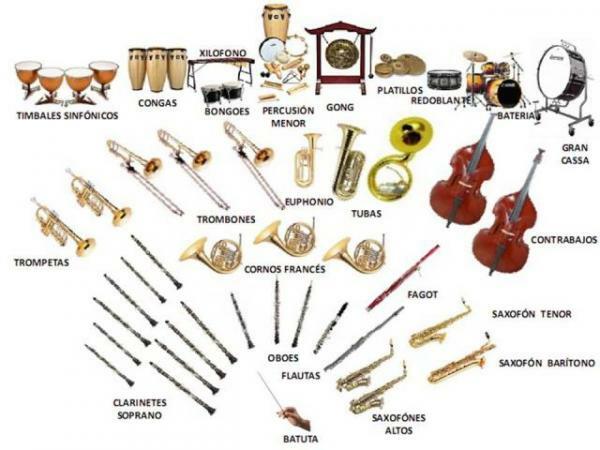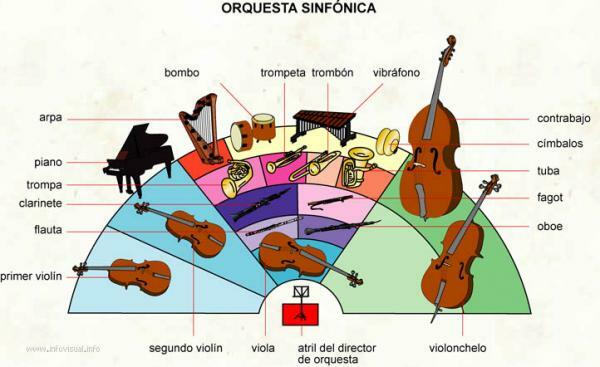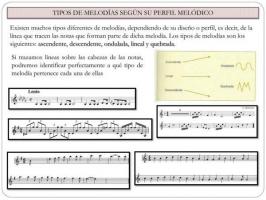DIFFERENCE between SYMPHONIC and PHILARMONIC orchestra

Image: Filarmonica Uniter
The classical orchestra It is par excellence and because of its history, the greatest exponent of the greatness in music, not only because of its volume and the number of members it has but because of the breadth of nuances and the balance that it achieves thanks to the richness of the combination of the different types of instruments that the make up.
There are different types of orchestra depending on how it is made up. It is likely that when you hear the word "orchestra" then you will hear "symphony" or "philharmonic". In this article by a PROFESSOR we will discover what is the difference between symphony and philharmonic orchestra.
The word "orchestra" has its origins in greek and formerly it was used to refer to the space in which a performance work was performed or danced.
Although we tend to associate this term with the classical orchestra, in general terms we understand by "orchestra" a set of instruments that perform a work, regardless of the type of instruments that make it up or the musical genre they perform.

Image: Infovisual
As we mentioned, in the beginning, any space where an art was performed was called an orchestra, something equivalent to a theater. It is around the Baroque period, in the s. XVII and XVIII that the classical orchestra is broadly conformed as the orchestra we know of stringed instruments (violin, viola, cello, double bass, piano, etc.), wind (wood: flute, piccolo, oboe, clarinet, English horn, bassoon, etc. and metal: trumpet, horn, trombone, horn, tuba, etc.) and percussion (timpani, bass drum, cymbals, snare, harpsichord, etc.). These are placed distributed on the stage and are guided under the baton of a director. In the case of opera, the orchestra is combined with singers who perform a work with a plot.
From this point the orchestra was subtly changing, musicians like Mozart and Haydn made changes to introduce new instruments among other modifications. The orchestra too was growing in number of members. If in the Baroque era the formation consisted of around 25 instrumentalists (and their respective instruments), at the time of the s. XIX it expanded to be made up of approximately 100 musicians, thanks to the creativity of musicians like Beethoven.
The musicians continued to experiment to expand the limits of the music and the structure of the orchestra. As a curious fact we can mention Gustav Mahler, who in 1910 premiered his 8th symphony which is often called the "Symphony of a thousand" since in addition to the orchestra, this work was performed by a choral mass (a choir made up of more than 20 or 25 singers). While this work was not made up of exactly 1,000 musicians, its membership was staggeringly close to this number.
Currently there is a great variety in music, they are interpreted both classic and contemporary and experimental works and therefore, the format of the orchestra changes according to the performance needs.
To know the difference between symphony and philharmonic orchestra it is important to understand each term well.
What is a symphony orchestra
Let's start with an important clarification: the word "symphonic" was established from the principle that the main function of the orchestra was interpret symphonies, Long-term musical works performed by numerous members, following the classical orchestra format we have already discussed.
What is a philharmonic orchestra
Knowing this, we can say that a philharmonic orchestra is also a symphony orchestra, because it has these same characteristics. "Philharmonic" is another word that comes from the Greek and means"music lover". The members of a symphony orchestra are professional musicians who have dedicated most of their lives to studying and performing with their instrument.
Classical music is probably one of the most demanding genres in terms of virtuosity, sensitivity and performance, so being part of a highly regarded symphony orchestra is often highly plaintiff to artistic and organizational level. Over time, more musicians were formed and there is a need and passion to create music at a symphonic level, as in the seventeenth century The solution arises of creating musical associations to integrate orchestras made up of musicians who are not necessarily professionals.
Although this happened historically, today the line that differentiates a symphony orchestra from a Philharmonic has been almost indifferently erased and the term has remained solely a purely by name. Thus the difference has remained solely in a decision of designate the identity of an orchestra.

Image: Slideplayer
The orchestras conform to music that you want to interpret. For example, the chamber orchestra is defined by the condition of being an orchestra of small size and The objective of the baroque orchestra is to perform works in the baroque style with the greatest fidelity.
There are endless works and variety of musical creations to enjoy. Fortunately, we have at our disposal not only what history has left us, but all the pending possibilities to create.
If you liked reading this article by a PROFESSOR about the difference between symphony and philharmonic orchestra, we invite you to leave a comment and continue exploring the rest of the articles.



